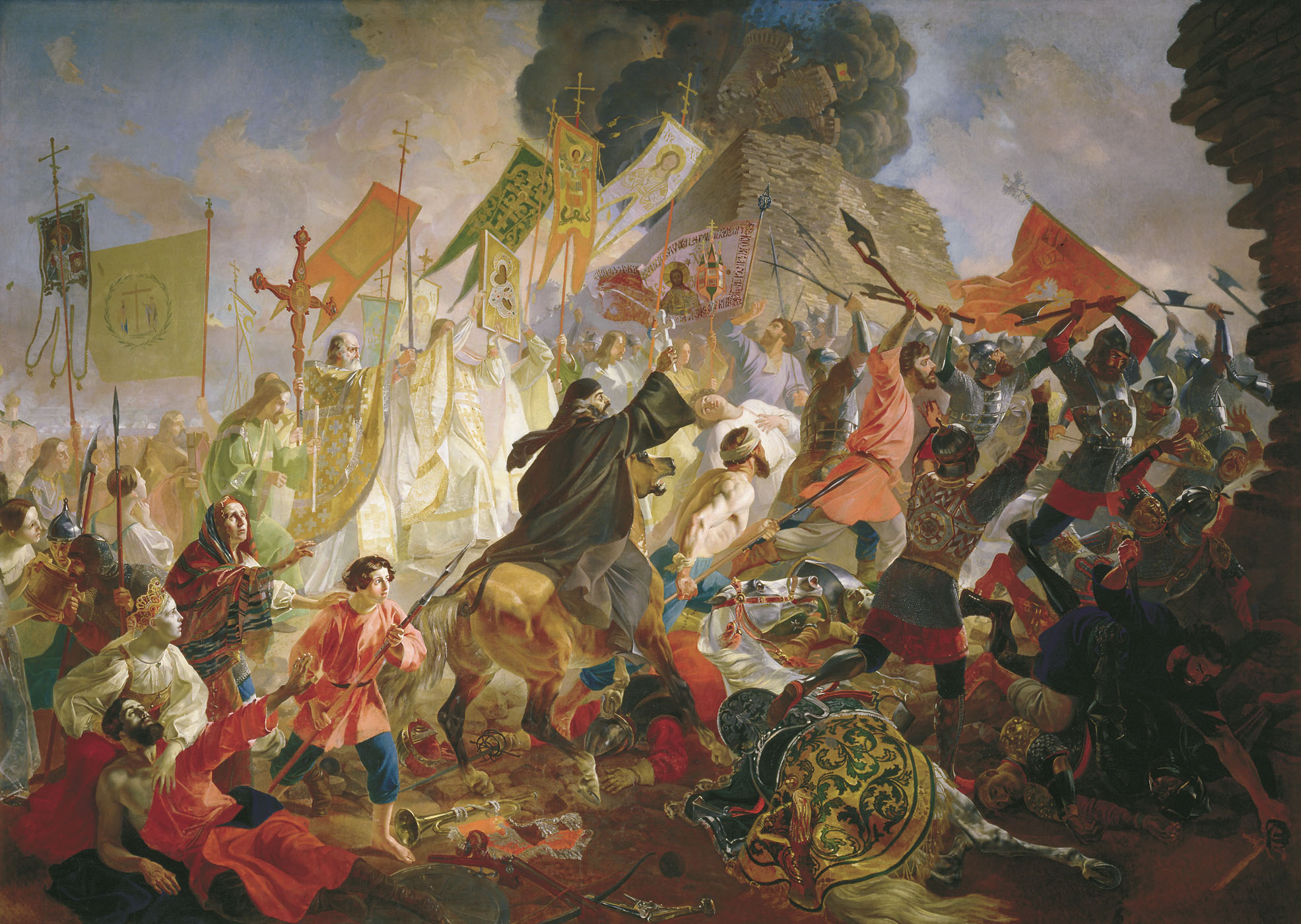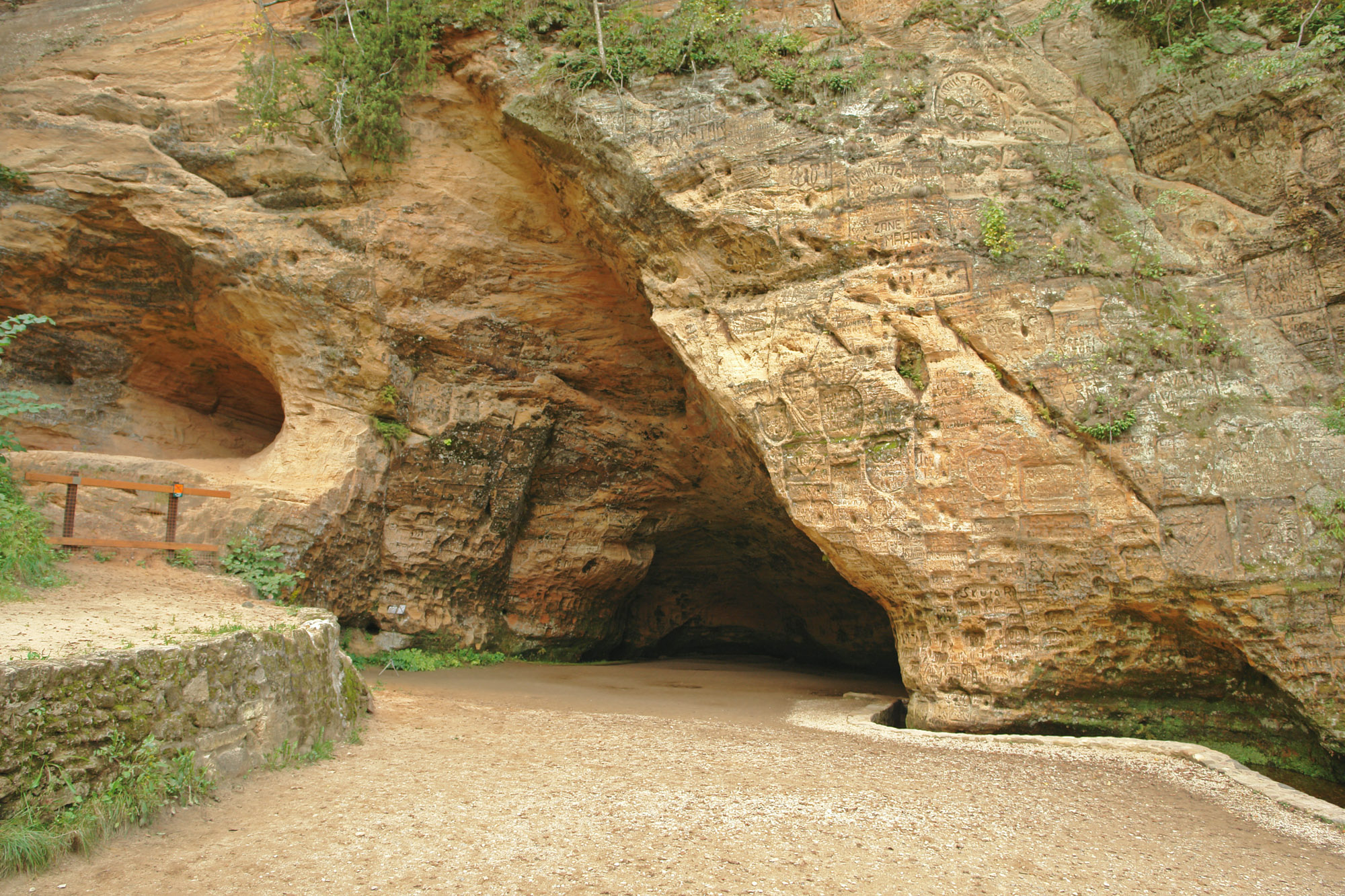|
Rūsiņš
Rūsiņš of Satekle () was a Latgalians, Latgalian duke in the early 13th century who is several times mentioned in ancient sources due to his activities in Livonian Crusade. Biography Rūsiņš date of birth is unknown and it is presumed that his residence was Satekle castle (most likely Tanīsa hillfort in the modern village of Rauna) which was important centre in the Latgalian county of Tālava. According to the ''Livonian Chronicle of Henry'', Rūsiņš had a permanent group of warriors with him () most likely similar to a ''druzhina''. Rūsiņš is first time mentioned by name in 1208 when he, together with dukes Varidots of Autīne and Tālivaldis of Beverīna, signed military alliance with the Livonian Brothers of the Sword. In the next few years, Rūsiņš was often involved in the military campaigns against Estonian tribes. In the autumn of 1208, Rūsiņš, together with Varidots, raided into the Estonian land of Saccalia and heavily devastated it. In the winter of 1 ... [...More Info...] [...Related Items...] OR: [Wikipedia] [Google] [Baidu] |
Tālivaldis
Tālivaldis or Tālibalds (; died 1215) was a Latgalians, Latgalian Elder (administrative title), elder, the ruler of Tālava, whose support for Albert of Riga and the German crusaders brought about his death at the hands of the native Balts, Baltic peoples. Biography Tālivaldis's date of birth is unknown. He is first noted in 1208 when he fought against the Saccalians and Ugandians as an ally of the Latgalian dukes Rūsiņš and Varidots. Tālivaldis was baptised in the Eastern Orthodox Church, Eastern Orthodox faith sometime before 1208 when he was a vassal of the Pskov Republic. Tālivaldis became a vassal of Albert of Riga and was thus involved in the Northern Crusades against the Estonians, Estonian tribes as an ally of the German crusaders. In 1211, the Estonians raided Tālava as revenge for the Latgalian support of the crusaders and pillaged the area round Trikāta parish, Trikāta, Tālivaldis's native region. In 1212, Tālivaldis, as a vassal of Albert of Riga, did no ... [...More Info...] [...Related Items...] OR: [Wikipedia] [Google] [Baidu] |
Tālava
Tālava (; ) was a Latgalian country in the northern Vidzeme and northern Latgale region of modern-day Latvia. It was bordered by the Latgalian Principality of Jersika to the south, the Livonian counties of Metsepole and Idumeja to the west, the Estonian counties of Sakala and Ugandi to the north and the Russian Novgorod Republic to the east. Tālava was first mentioned in the ''Livonian Chronicle of Henry'' in 1207 as the Christian County of ''Tholowa''. Russian chronicles refer to the county of ''Atzele'' (), first mentioned in 1111, which was probably the eastern part of Tālava. The county existed from the 10th century until 1224 when it was divided between Bishopric of Riga and the Brothers of the Sword. History After Mstislav Rostislavich "the Brave", the prince of Novgorod, rode against the Chud during the winter of 1179-1180, Tālava was forced to pay tribute to Novgorod. The leader of Tālava, Tālivaldis and his sons were baptized in the Eastern Orthodox faith. ... [...More Info...] [...Related Items...] OR: [Wikipedia] [Google] [Baidu] |
Latgalians
Latgalians (, , modern ; variant translations also include Latgallians, Lettigalls or Lettigallians) were an ancient Baltic tribe. They likely spoke a variant of Latvian language, which probably became the ''lingua franca'' in present-day Latvia during the Northern Crusades due to their alliance with the crusaders. Latgalians later integrated with the neighbouring tribes, forming the core of modern Latvians. History The Latgalians were an Eastern Baltic tribe whose origin is little known. In the 5th and 6th centuries, they lived in the eastern part of present-day Vidzeme (west of the Aiviekste River), and later on in nearly all the territory of that region. In written sources, they are mentioned from the 11th century onward. In the first two decades of the 13th century, the (Western) Latgalians allied with German (mainly Saxon) crusaders. Their lands (the Eldership of Tālava, the Principality of Jersika and the Principality of Koknese) were incorporated into Livonia as va ... [...More Info...] [...Related Items...] OR: [Wikipedia] [Google] [Baidu] |
Pskov
Pskov ( rus, Псков, a=Ru-Псков.oga, p=psˈkof; see also Names of Pskov in different languages, names in other languages) is a types of inhabited localities in Russia, city in northwestern Russia and the administrative center of Pskov Oblast, located about east of the Estonian border, on the Velikaya, Velikaya River. Population: Pskov is one of the oldest cities in Russia. During the Middle Ages, it served as the capital of the Pskov Republic and was a trading post of the Hanseatic League before it was incorporated into the Grand Duchy of Moscow and became an important border fortress in the Tsardom of Russia. History Early history Pskov is one of the oldest cities in Russia. The name of the city, originally Pleskov (historic Russian spelling , ), may be loosely translated as "[the town] of :wikt:purling, purling waters". It was historically known in English as Plescow. Its earliest mention comes in 903, which records that Igor of Kiev married a local lady, Olga ... [...More Info...] [...Related Items...] OR: [Wikipedia] [Google] [Baidu] |
Medieval Latgalian People
In the history of Europe, the Middle Ages or medieval period lasted approximately from the 5th to the late 15th centuries, similarly to the post-classical period of global history. It began with the fall of the Western Roman Empire and transitioned into the Renaissance and the Age of Discovery. The Middle Ages is the middle period of the three traditional divisions of Western history: classical antiquity, the medieval period, and the modern period. The medieval period is itself subdivided into the Early, High, and Late Middle Ages. Population decline, counterurbanisation, the collapse of centralised authority, invasions, and mass migrations of tribes, which had begun in late antiquity, continued into the Early Middle Ages. The large-scale movements of the Migration Period, including various Germanic peoples, formed new kingdoms in what remained of the Western Roman Empire. In the 7th century, North Africa and the Middle East—once part of the Byzantine Empire—came und ... [...More Info...] [...Related Items...] OR: [Wikipedia] [Google] [Baidu] |
1212 Deaths
Year 1212 ( MCCXII) was a leap year starting on Sunday of the Julian calendar. Events By place England * July 10 – The Great Fire: The most severe of several early fires of London burns most of the city to the ground; over 3,000 people die, many of them by drowning in the River Thames. According to a contemporary account: "An awful fire broke out on the Southwark side of London Bridge; while it was raging, a fire broke out at the other end also and so hemmed in the numerous crowds who had assembled to help the distressed. The sufferers, to avoid the flames, threw themselves over the bridge into boats and barges; but many of these sunk, the people crowding into them."."Fires, Great", in ''The Insurance Cyclopeadia: Being an Historical Treasury of Events and Circumstances Connected with the Origin and Progress of Insurance'', Cornelius Walford, ed. (C. and E. Layton, 1876) p26 * John, King of England, impounds the revenue of all prelates appointed by bishops, wh ... [...More Info...] [...Related Items...] OR: [Wikipedia] [Google] [Baidu] |
Henry Of Livonia
Henry of Latvia (; ; ; ; 1187 – ), also known as Henry of Livonia, was a priest, missionary and historian. He wrote the '' Livonian Chronicle of Henry'' which describes the evangelization of the regions which are now part of Estonia and Latvia during the Northern Crusades. Biography The chronicles say that Henry was a Roman Catholic priest who witnessed most of events described. Henry is thought to have been born in 1187 in Magdeburg. Henry was probably German, but many historians consider him a Latvian, brought up in a German family and consistently referring to Germans as "we", although it is also possible that he came from Livonia. He had a thoroughly German and Catholic education and as a youth was attached to the household of the Prince-Bishop Albert of Buxhoeveden (c.1165 – 17 January 1229), was ordained a priest in 1208, founded a parish and lived out his life in peace. Henry's ''Chronicles'', compiled around 1229, are written from a clerical point of view, that ... [...More Info...] [...Related Items...] OR: [Wikipedia] [Google] [Baidu] |
Crossbow
A crossbow is a ranged weapon using an Elasticity (physics), elastic launching device consisting of a Bow and arrow, bow-like assembly called a ''prod'', mounted horizontally on a main frame called a ''tiller'', which is hand-held in a similar fashion to the stock (firearms), stock of a long gun. Crossbows shoot arrow-like projectiles called ''crossbow bolt, bolts'' or ''quarrels''. A person who shoots crossbow is called a ''crossbowman'', an ''arbalister'' or an ''arbalist (crossbowman), arbalist'' (after the arbalest, a European crossbow variant used during the 12th century). Crossbows and bows use the same elastic launch principles, but differ in that an archer using a Bow and arrow, bow must draw-and-shoot in a quick and smooth motion with limited or no time for aiming, while a crossbow's design allows it to be spanned and cocked ready for use at a later time and thus affording them unlimited time to aim. When shooting bows, the archer must fully perform the bow draw, draw, h ... [...More Info...] [...Related Items...] OR: [Wikipedia] [Google] [Baidu] |
Sigulda
Sigulda (; ; Polish Zygwold) is a town in the Vidzeme region of Latvia, from the capital city Riga. Overview Sigulda is on a picturesque stretch of the primeval Gauja river valley. Because of the reddish Devonian sandstone which forms steep rocks and caves on both banks of the river, Sigulda has been called the "Switzerland of Vidzeme". After the restoration of Latvian independence in 1991, an emphasis was placed on conserving Sigulda's public monuments and parks as well as improving the town's tourist sector. Supported by the town council, a traditional Opera Festival takes place in an open-air music hall in the castle ruins each summer. A Town Festival is celebrated in May when cherry trees blossom, while Sigulda is known for the colors of its trees in autumn. Sports such as skiing, bobsledding, and the luge are popular in wintertime and bungee jumping is practiced during the rest of the year. Gutman's Cave lies halfway between Sigulda Castle and Turaida Castle and h ... [...More Info...] [...Related Items...] OR: [Wikipedia] [Google] [Baidu] |
Viljandi
Viljandi (, , , , ) is a Populated places in Estonia, town and Municipalities of Estonia, municipality in southern Estonia with a population of 17,255 in 2024. It is the capital of Viljandi County and is geographically located between two major Estonian cities, Pärnu and Tartu. The town was first mentioned in 1283, upon being granted its town charter by Wilhelm von Endorpe. The town became a member of the Hanseatic League at the beginning of the 14th century, and is one of five Estonian towns and cities in the league. The once influential Estonian newspaper ''Sakala (newspaper), Sakala'' was founded in Viljandi in 1878. Symbols The flag of Viljandi is bi-coloured, its upper part is light blue and lower part white. The city's shield-shaped coat of arms is light blue, with a white rose in the middle. Viljandi is the white rose city – in midsummer there are 720 white roses flowering in front of the city hall, planted for the town's anniversary in 2003. In summer, the White Rose D ... [...More Info...] [...Related Items...] OR: [Wikipedia] [Google] [Baidu] |



